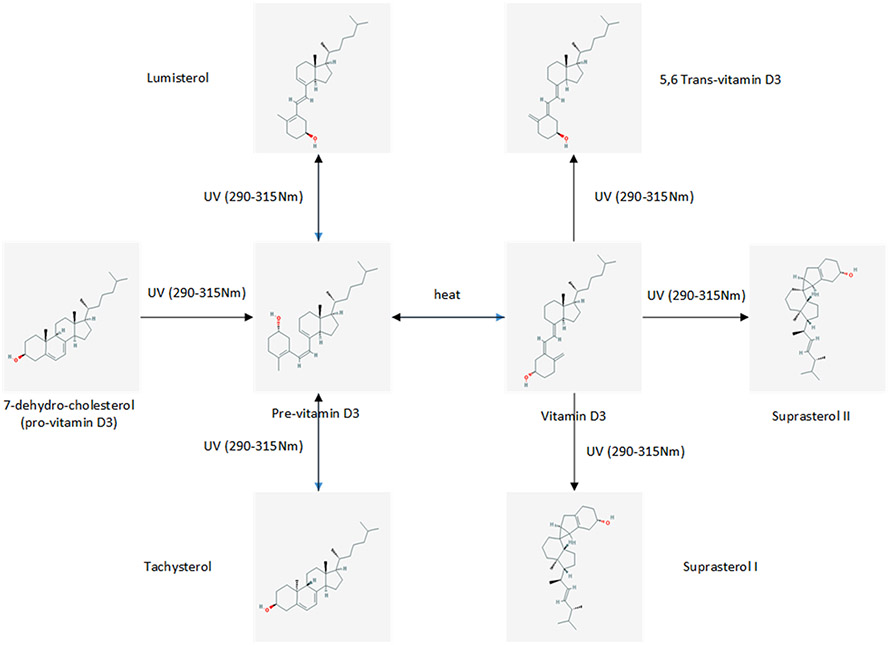Fig. 3.
When the skin is exposed to UV radiation in the 290–315 nm wavelength range, 7-dehydrocholesterol absorbs this energy, which causes chemical bonds within the molecule to break and rearrange, resulting in the formation of pre-vitamin D. In the skin, pre-vitamin D undergoes rapid, thermally-induced, isomerization to produce vitamin D. Once formed, pre-vitamin D and vitamin D continue to absorb UV. Prolonged exposure to UV radiation results in the breakdown of these molecules into biologically inactive photoproducts. For this reason, during prolonged irradiation, a steady state is reached when only 10–15% of 7-dehydrocholesterol is simultaneously converted to pre-vitamin D3. This ensures that no toxic levels of vitamin D are synthesized under excessive sun exposure conditions. (The chemical structures are taken from PubChem: https://pubchem.ncbi.nlm.nih.gov).

